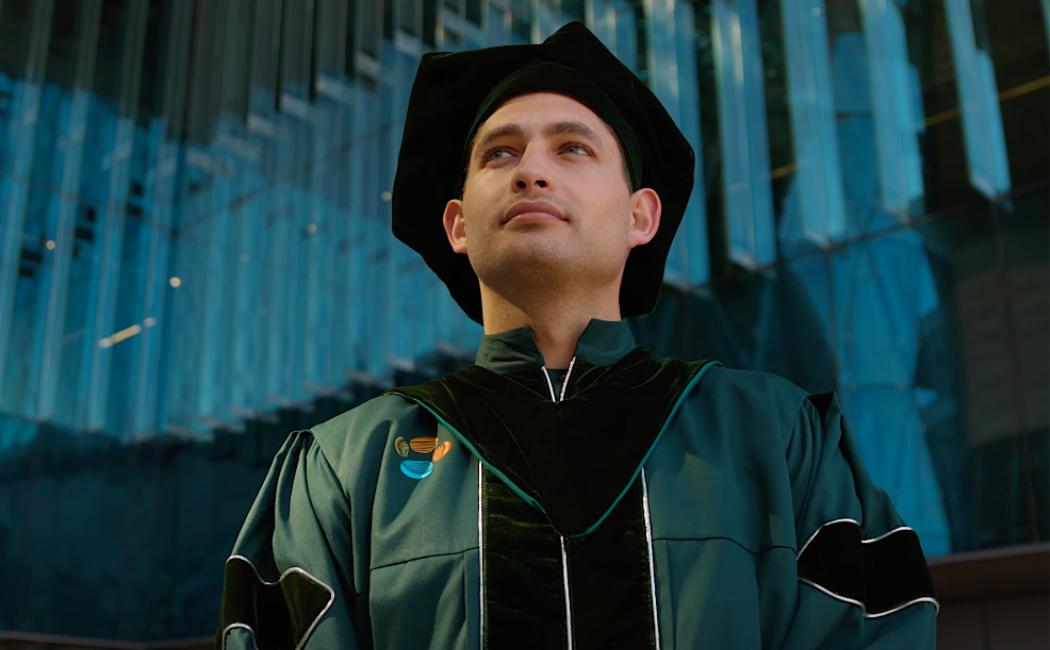
Liam Swanepoel grew up on his family’s farm in the picturesque town of Tulbagh, not far from Cape Town, South Africa. His academic journey to KAUST began at Stellenbosch University, where he completed a bachelor’s degree in mechatronic engineering followed by a master’s degree in biomedical engineering. During his master’s degree, he was introduced to a visiting professor, Jurgen Kosel, who would become Swanepoel’s supervisor for his Ph.D. studies at KAUST. Now, as he joins the KAUST Alumni having completed said Ph.D. in bioengineering, Swanepoel fondly remembers his first visit to the shores of the Red Sea, and the magnificent campus set between “these beautiful blue, tropical waters and the surrounding desert landscape.”
Following his first visit, Swanepoel returned for a five-month student internship, during which he decided that full-time study at KAUST would be a suitable and wise choice. “It was fantastic,” he recalls; “I remember the first time I listened to the call to prayer at the Grand Mosque. It was a very different experience from where I grew up.” And so, in February of 2019, Swanepoel commenced his Ph.D. in KAUST’s Biological and Environmental Science and Engineering (BESE) division, working with Professor Kosel to find new applications for biomedical devices and sensors.
Swanepoel’s research was focused chiefly on “finding new sensing and imaging alternatives to current x-ray imaging, specifically for the placement of catheters on neonatal babies.” Newborn babies, especially those born prematurely, often require medical treatment administered through the placement of umbilical catheters, which are traditionally localized using x-ray technology. These procedures can subject a baby to harmful excesses of radiation in the first weeks of life. “There’s big concern internationally to try and reduce that cumulative dose these babies are exposed to,” says Swanepoel, and this is compounded in low-income communities where access to an x-ray machine is often subject to lengthy wait times. To address these issues, Swanepoel has worked to develop “a flexible, lightweight, biocompatible magnetic polymer that [can be shaped] into any size and just attached to an existing catheter.” This allows the catheter to be localized using a magnetic sensing device and a novel tracking algorithm, eliminating the need for any x-ray imaging.
In 2019, Swanepoel presented his research as part of the Falling Walls Lab at KAUST, and was awarded first place, which allowed him to travel to Berlin to present again at their global forum. In addition to this achievement, his research was funded by KAUST Technology Transfer, with a Research Translational Grant to assist in the development of market-ready products. Swanepoel has created a startup company with which he intends to license the intellectual property for his product from KAUST and take it to market “within the South African context as a start, and ultimately thereafter, the world.”
His time at KAUST has primed him suitably for this new venture, although not just because of his academic achievement. “Some of the most valuable information I learned [at KAUST] was how to interact with the industry partners in this field, and also the medical device regulatory process,” says Swanepoel, grateful to have had some exposure to industry collaboration in addition to his studies. In particular, he is appreciative of Professor Kosel, whose “knowledge and charisma inspired [him] constantly to achieve all the things [he has].” Swanepoel feels that his experience at KAUST has bolstered his self-confidence and shown him that scientific discovery is about “learning what you know, but also what you don’t know, and learning how to bridge those gaps.”
His first impression of KAUST was of its picturesque setting between the desert and the Red Sea, and at times when work became difficult, Swanepoel was always sure to remind himself of what was on his doorstep. With new friends from all over the world he has enjoyed trips to Rabigh to go snorkeling or free diving, or made trips to Jeddah for dinner or to see a movie. Even within the campus itself, he found it relaxing to get some exercise at the end of the day by going kiteboarding “when the sun is low over the horizon and the colors are so vibrant.” Swanepoel intends to visit the friends he’s made at KAUST in their home countries, and he looks forward to welcoming them should they visit Cape Town. It’s clear that he will become an integral part of the alumni community, and a vocal ambassador for the place that has become his Saudi Arabian home. “I will go out of my way to advise people to come to KAUST,” he concludes, “because I know what KAUST did for me, and what it will still do for so many aspiring students.”